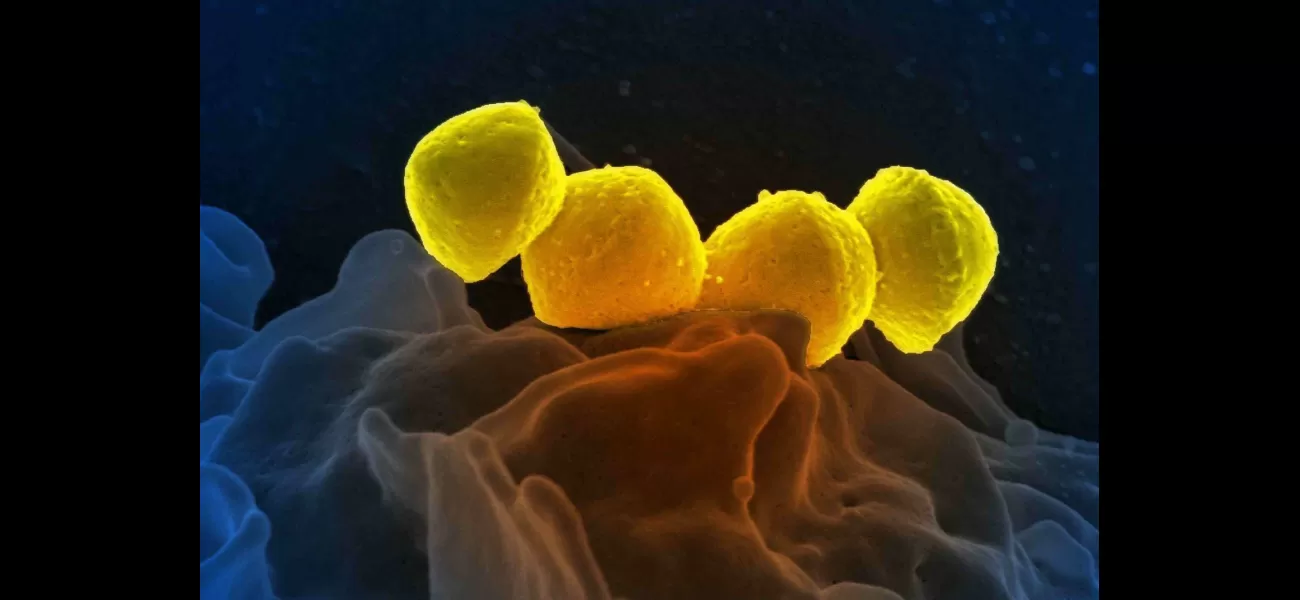Deadly bacterial infection in Japan reaches all-time high, according to reports.
Japan sees record levels of dangerous, fatal bacterial infection, but no clear explanation yet.
June 18th 2024.

According to official figures, Japan has experienced a surge in the number of dangerous and potentially fatal bacterial infections. Experts have been unable to determine the cause for this alarming increase.
As of June 2, Japan's Health Ministry reported a staggering 977 cases of streptococcal toxic shock syndrome (STSS), a rare but serious bacterial infection with a mortality rate of up to 30%. Tragically, 77 individuals have lost their lives to this infection between January and March of this year.
The current outbreak has surpassed last year's record of 941 preliminary infections, making it the highest number of cases since data began being collected in 1999. In 2020, there were 97 deaths attributed to STSS, the second-highest number in the past six years.
STSS is a severe infection that occurs when bacteria invade deep tissues and the bloodstream. Initial symptoms include fever, muscle pain, and vomiting, but the condition can quickly become life-threatening as the body goes into shock, causing low blood pressure, swelling, and multiple organ failure.
The US Centers for Disease Control and Prevention (CDC) warns that even with treatment, STSS can be deadly, with a mortality rate of up to 30%. The majority of STSS cases are caused by group A streptococcus bacteria, which typically leads to fever and throat infections in children. However, in rare cases, these bacteria can become invasive and produce a toxin that allows them to enter the bloodstream, causing serious illnesses like toxic shock syndrome.
In addition to STSS, group A streptococcus can also cause necrotizing fasciitis, commonly known as "flesh-eating" disease, which can result in the loss of limbs. However, the CDC notes that most patients who develop this condition have underlying health conditions, such as cancer or diabetes, that weaken their immune system and make them more susceptible to infections.
The COVID-19 pandemic brought a significant reduction in invasive group A streptococcus infections due to measures like masking and social distancing. However, as these precautions were relaxed, many countries, including Japan, have reported a rise in cases.
In December 2022, five European countries reported an increase in invasive group A streptococcus infections, with children under the age of 10 being the most affected. The CDC in the United States also noted a rise in cases during this time and launched an investigation.
In March, Japanese authorities issued a warning about a surge in STSS cases. The National Institute of Infectious Diseases released a risk assessment stating that the number of cases caused by invasive group A streptococcus had been on the rise since July 2023, particularly among individuals under 50 years old.
According to NHK, Japanese public broadcaster, the reason for this year's spike in STSS cases remains unclear. Professor Ken Kikuchi from Tokyo Women's Medical University believes that the weakened immune systems of people due to the COVID-19 pandemic might be a contributing factor. He explains, "Our bodies can build immunity when exposed to bacteria regularly, but this mechanism was absent during the pandemic. As a result, more people may be susceptible to infection, which could explain the sharp increase in cases."
As of June 2, Japan's Health Ministry reported a staggering 977 cases of streptococcal toxic shock syndrome (STSS), a rare but serious bacterial infection with a mortality rate of up to 30%. Tragically, 77 individuals have lost their lives to this infection between January and March of this year.
The current outbreak has surpassed last year's record of 941 preliminary infections, making it the highest number of cases since data began being collected in 1999. In 2020, there were 97 deaths attributed to STSS, the second-highest number in the past six years.
STSS is a severe infection that occurs when bacteria invade deep tissues and the bloodstream. Initial symptoms include fever, muscle pain, and vomiting, but the condition can quickly become life-threatening as the body goes into shock, causing low blood pressure, swelling, and multiple organ failure.
The US Centers for Disease Control and Prevention (CDC) warns that even with treatment, STSS can be deadly, with a mortality rate of up to 30%. The majority of STSS cases are caused by group A streptococcus bacteria, which typically leads to fever and throat infections in children. However, in rare cases, these bacteria can become invasive and produce a toxin that allows them to enter the bloodstream, causing serious illnesses like toxic shock syndrome.
In addition to STSS, group A streptococcus can also cause necrotizing fasciitis, commonly known as "flesh-eating" disease, which can result in the loss of limbs. However, the CDC notes that most patients who develop this condition have underlying health conditions, such as cancer or diabetes, that weaken their immune system and make them more susceptible to infections.
The COVID-19 pandemic brought a significant reduction in invasive group A streptococcus infections due to measures like masking and social distancing. However, as these precautions were relaxed, many countries, including Japan, have reported a rise in cases.
In December 2022, five European countries reported an increase in invasive group A streptococcus infections, with children under the age of 10 being the most affected. The CDC in the United States also noted a rise in cases during this time and launched an investigation.
In March, Japanese authorities issued a warning about a surge in STSS cases. The National Institute of Infectious Diseases released a risk assessment stating that the number of cases caused by invasive group A streptococcus had been on the rise since July 2023, particularly among individuals under 50 years old.
According to NHK, Japanese public broadcaster, the reason for this year's spike in STSS cases remains unclear. Professor Ken Kikuchi from Tokyo Women's Medical University believes that the weakened immune systems of people due to the COVID-19 pandemic might be a contributing factor. He explains, "Our bodies can build immunity when exposed to bacteria regularly, but this mechanism was absent during the pandemic. As a result, more people may be susceptible to infection, which could explain the sharp increase in cases."
[This article has been trending online recently and has been generated with AI. Your feed is customized.]
[Generative AI is experimental.]
0
0
Submit Comment





